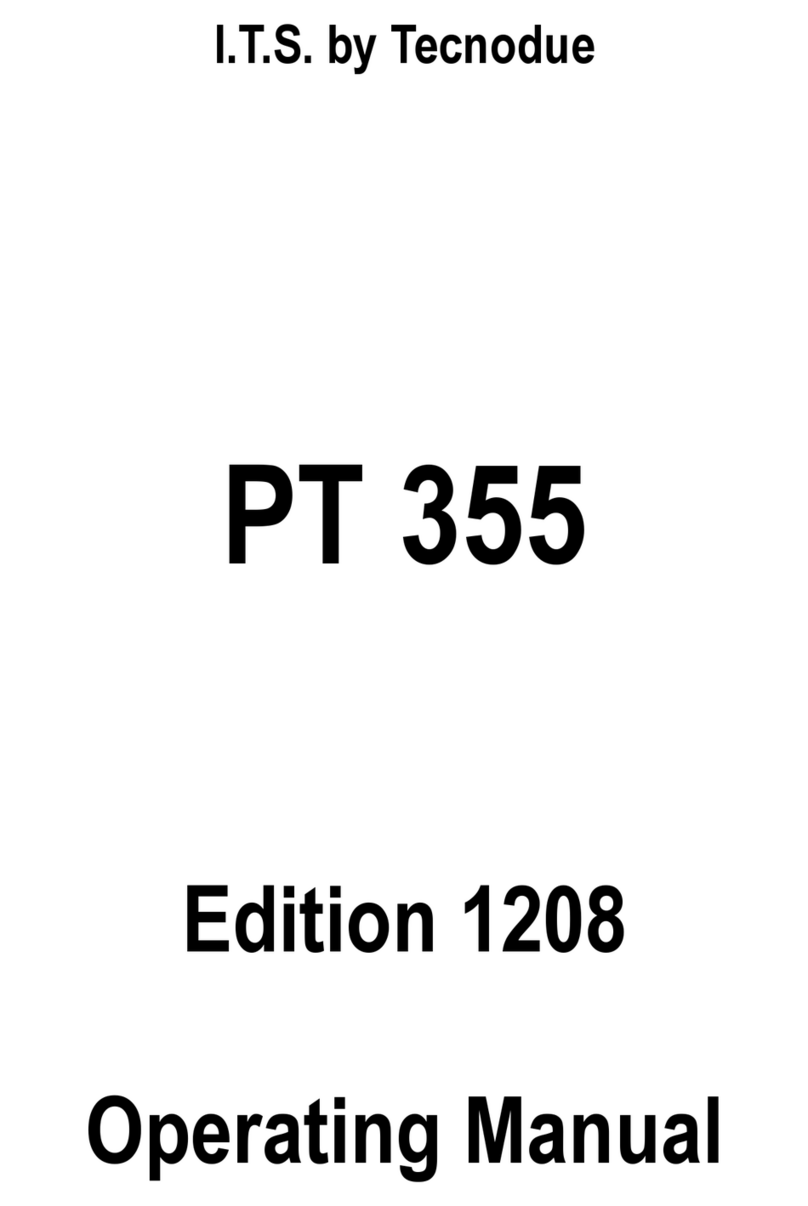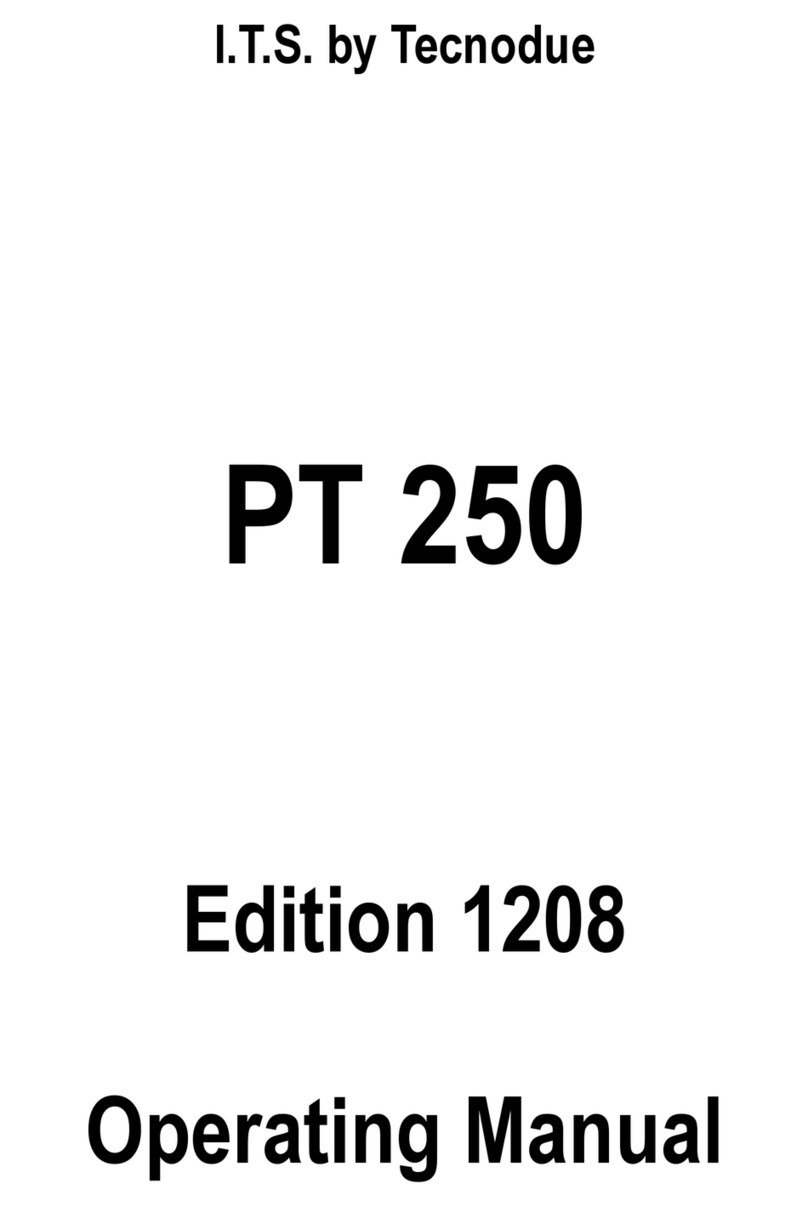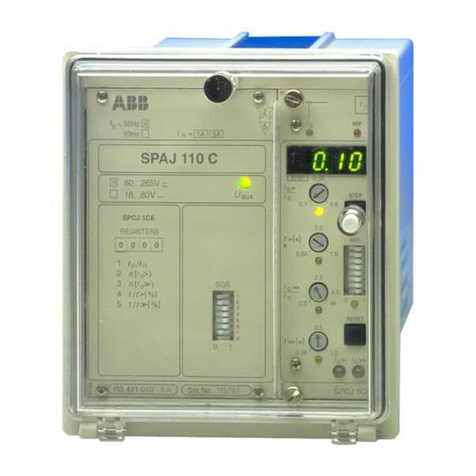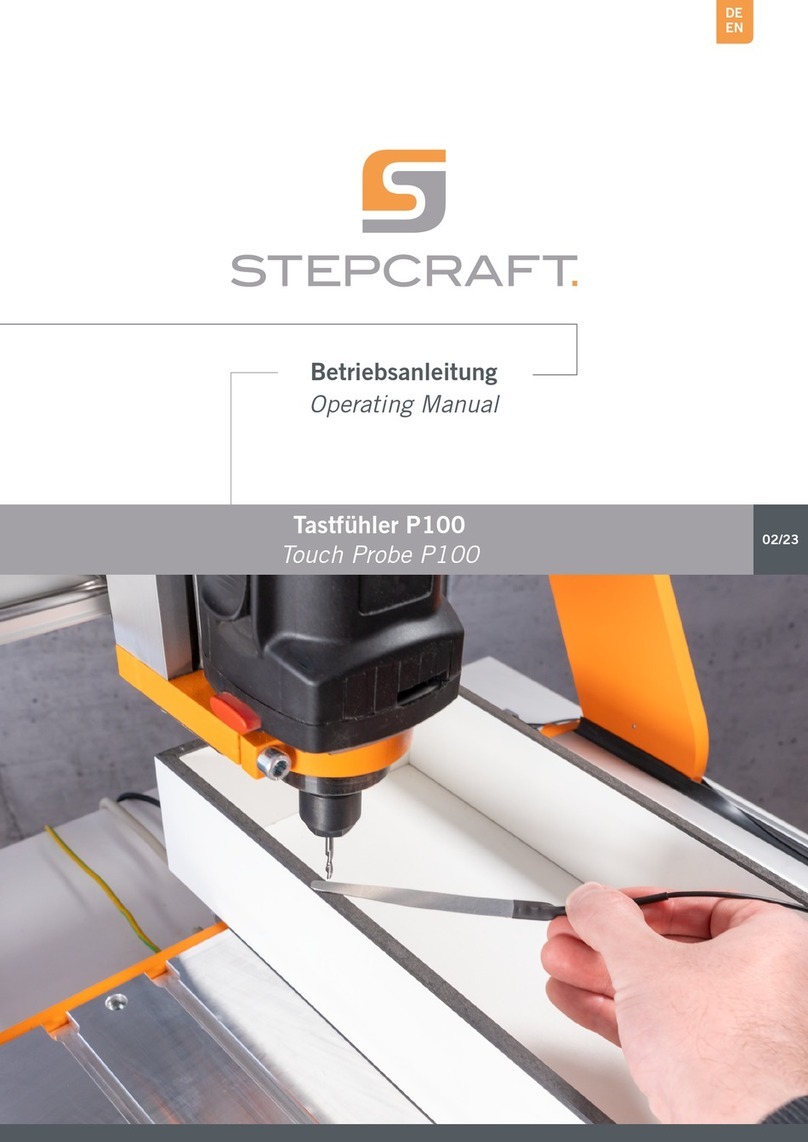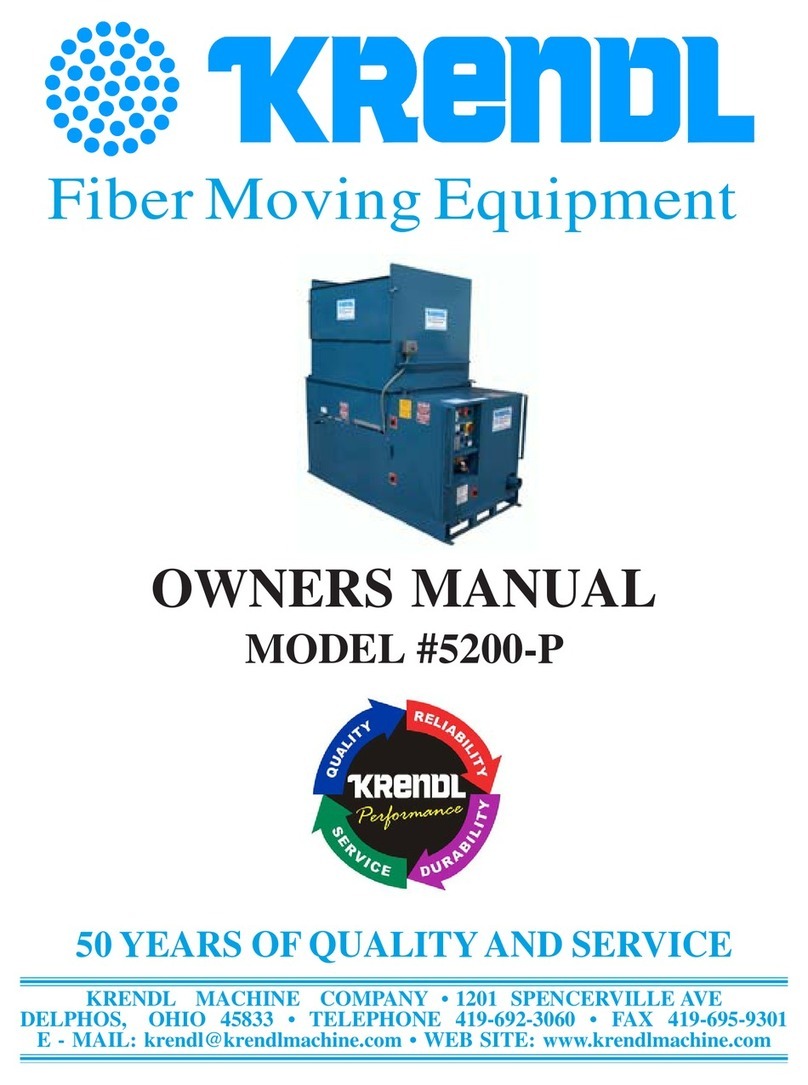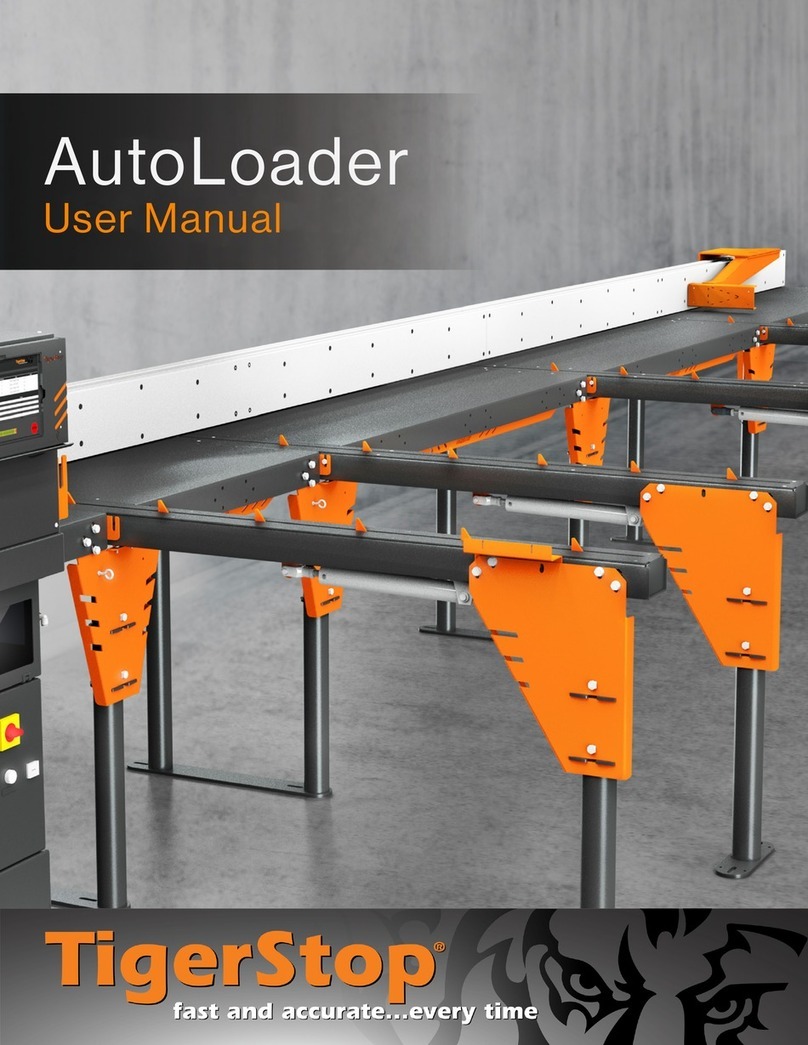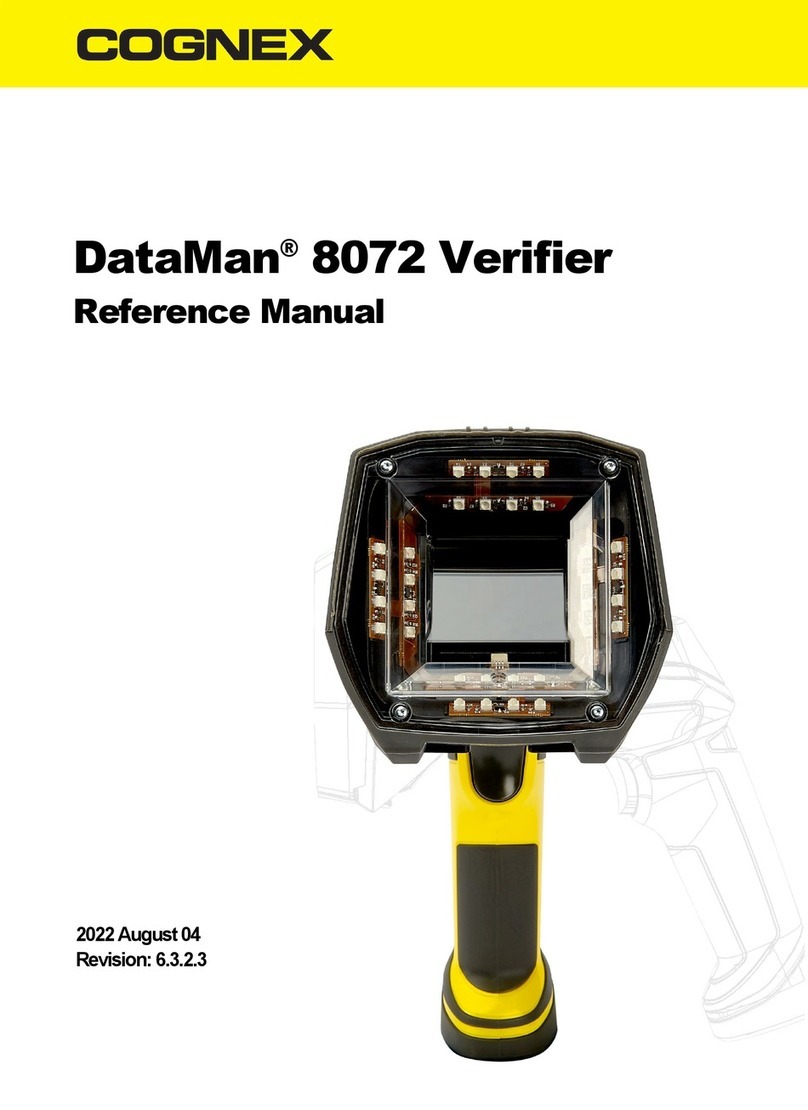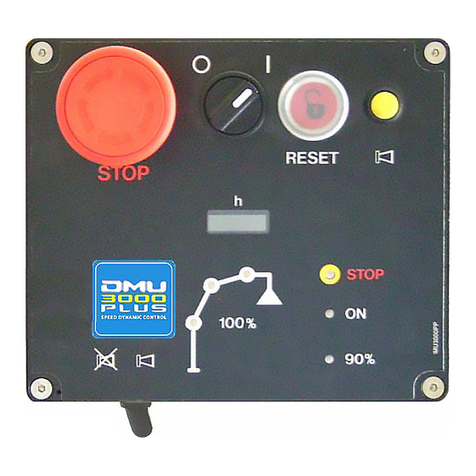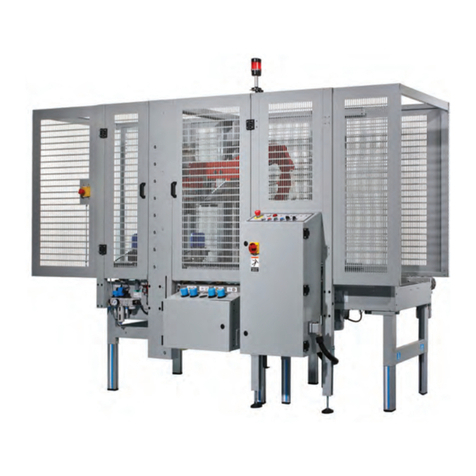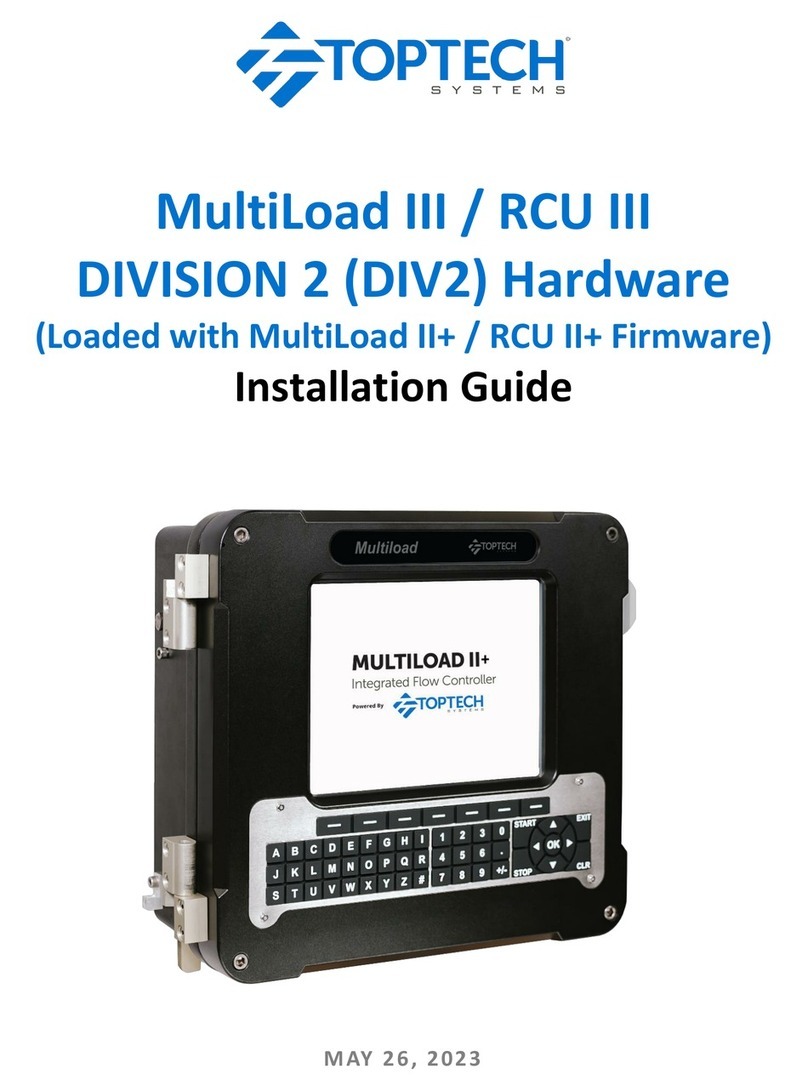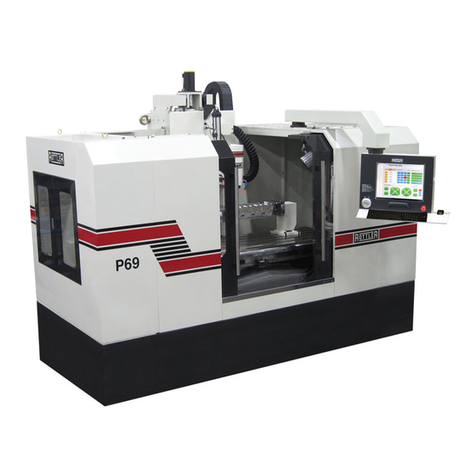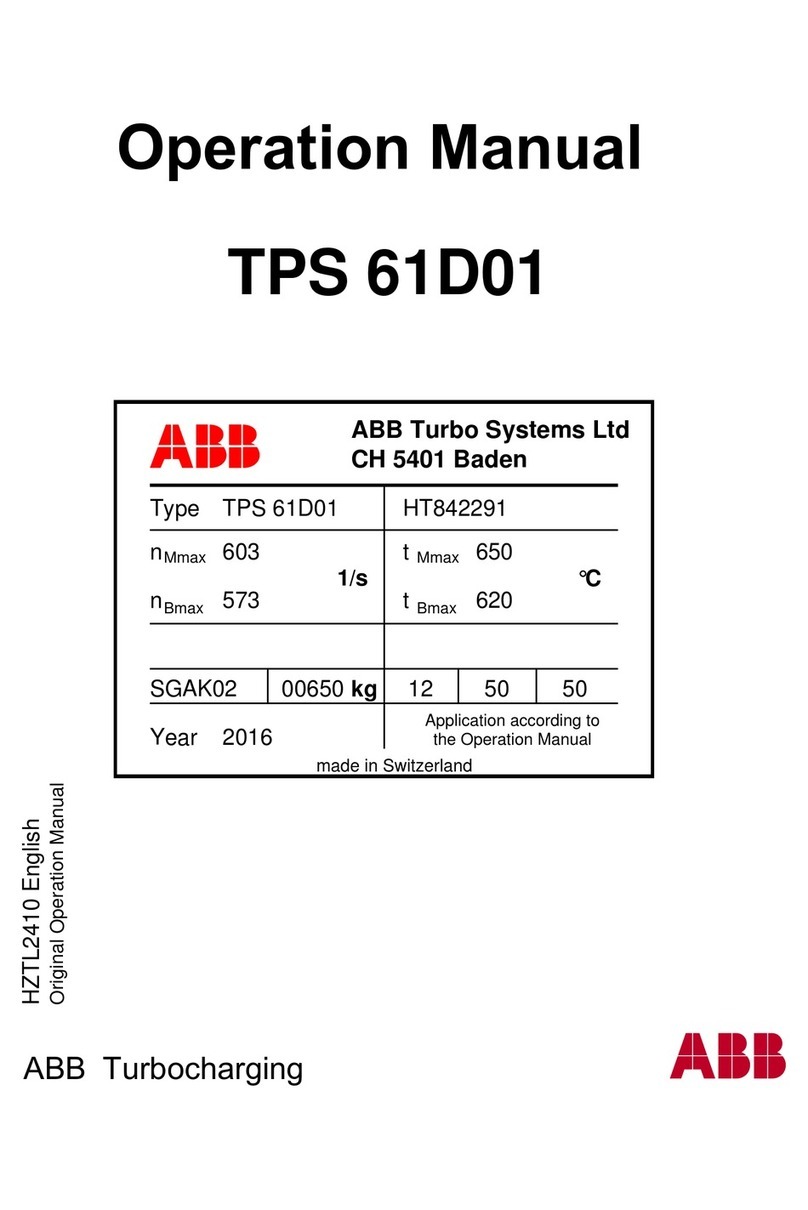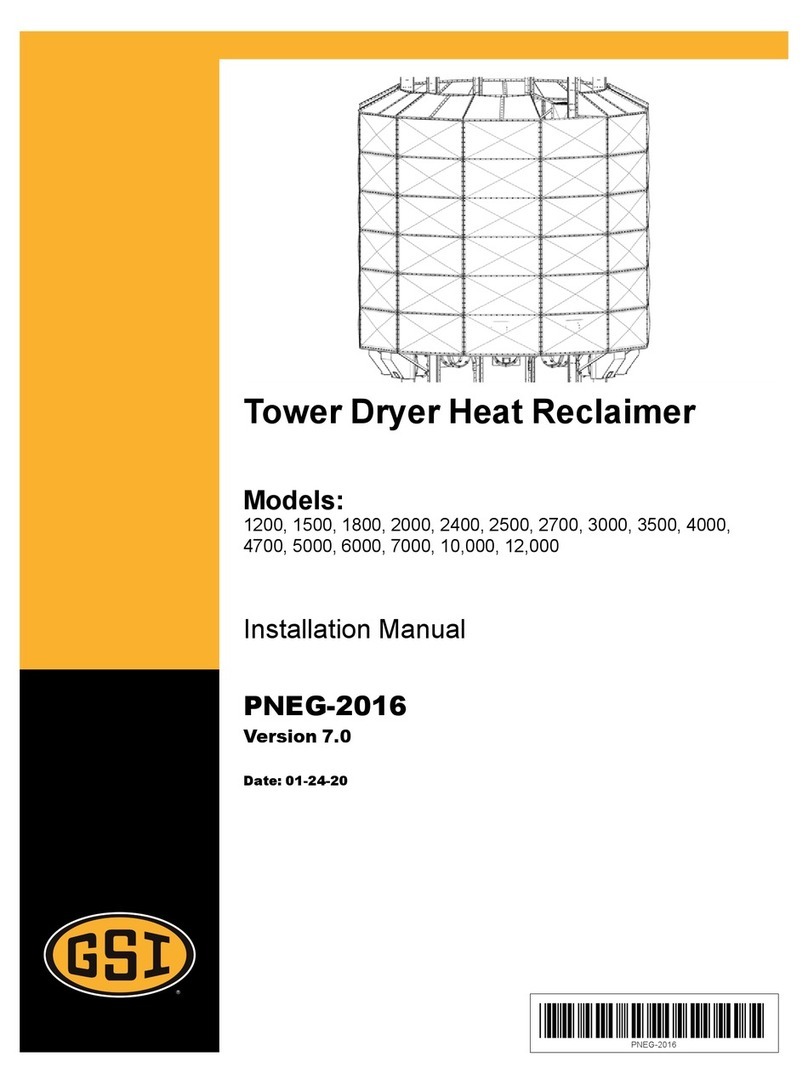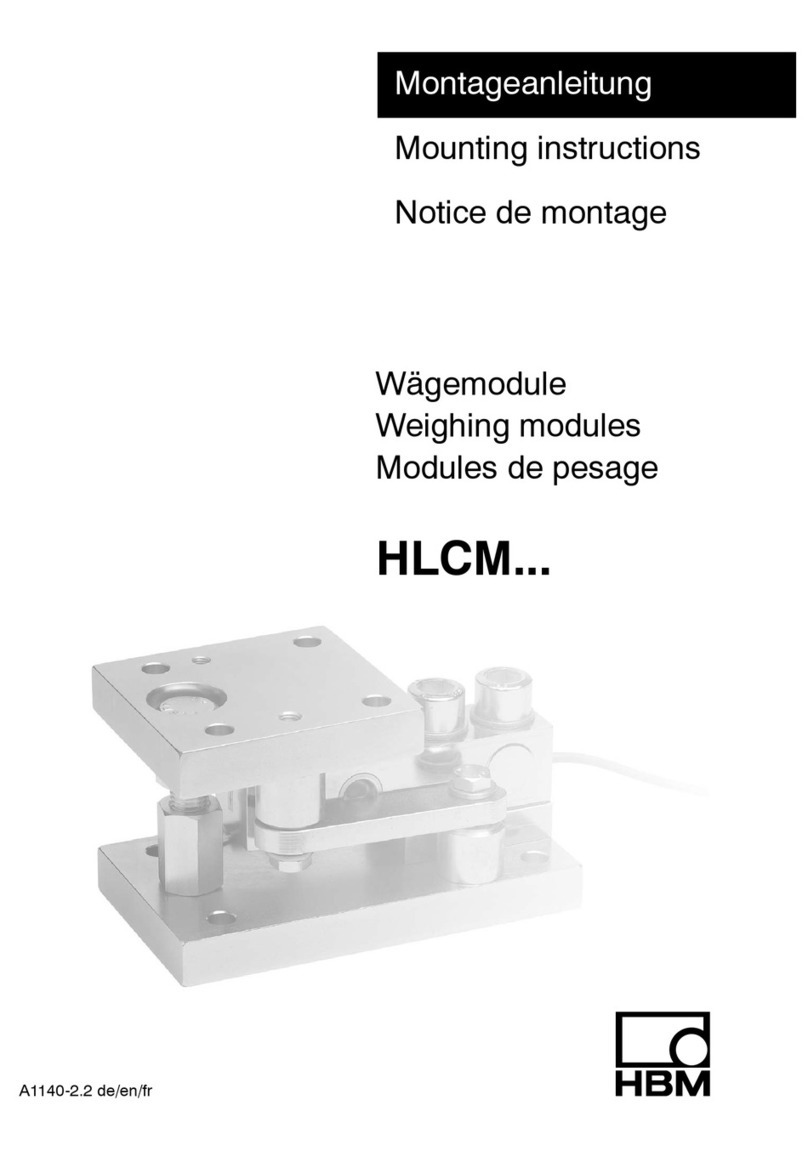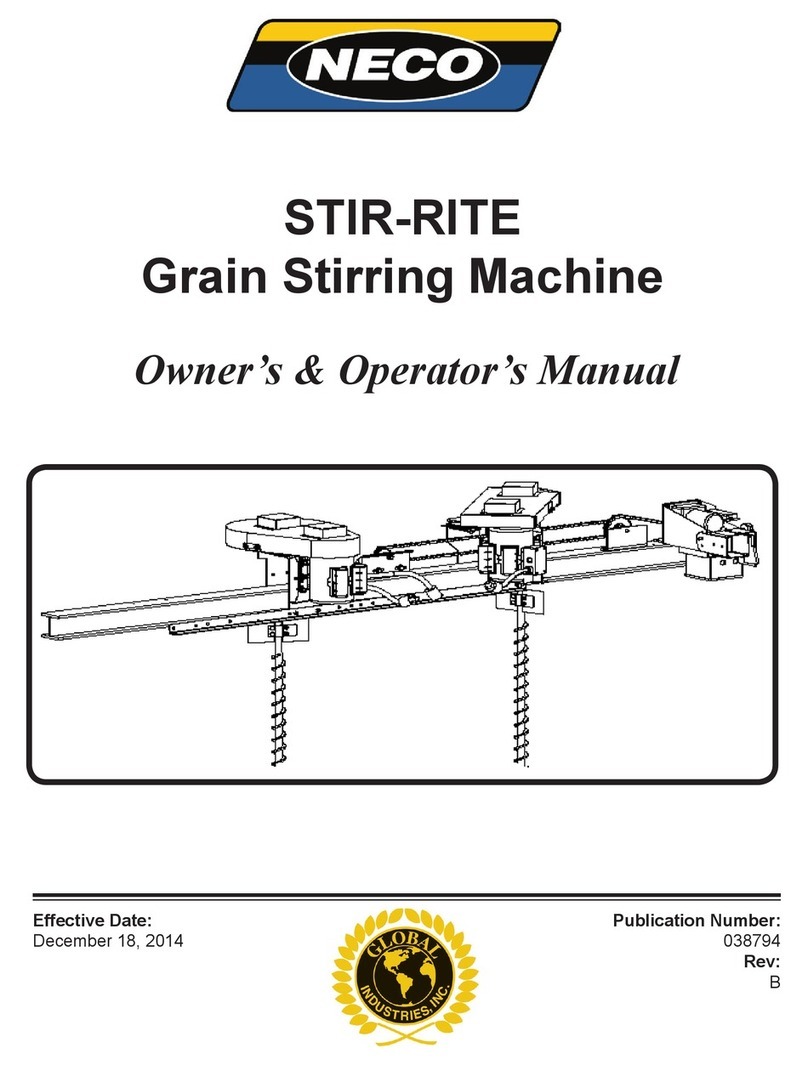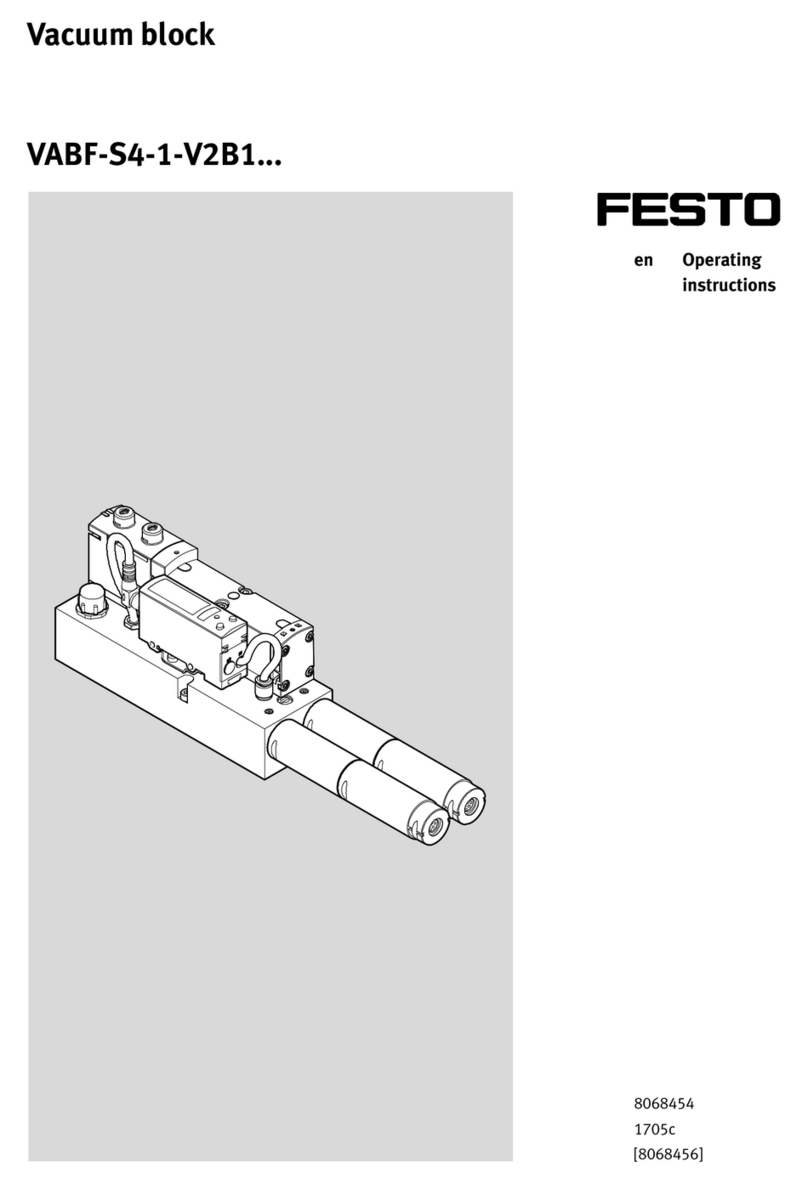Tecnodue I.T.S. PT 500 User manual

I.T.S. by Tecnodue
PT 500
WITH REVOLVING HEATING MIRROR & FACING
TOOL, ROLLERS
Se . no. 1121 1744
Ope ating Manual

I.T.S. Ital T ade Se vices PT 500 with evolving facing tool & heating mi o Ope ating Manual
2
The technical data and information contained on this manual can be changed without any notice

I.T.S. Ital T ade Se vices PT 500 with evolving facing tool & heating mi o Ope ating Manual
3
PT 500
The machine has been designed and constructed for the welding of PE, PP, PVDF and other thermoplastics pipes and fittings.
I.T.S. Ital T ade Se vices S. .l.
Via Sca sellini 77 , 16149 Genova Italy
Phone : +39-010-6423396
Fax : +39-010-6423513
Web Site : www.its-tecnodue.com
Standa d Components
1. Hydraulic nit
2. Facing Tool
3. Heating Mirror
4. Basic machine
On equest can be supplied:
5. Light weight alloy reducing rings for pipes and fittings d. 200,225,250,280,315,355,400,450mm
6. Stub End Device
•Short spigot fittings clamp d. 500mm
•Wooden transport box according to ISPM 15
•LD (printing and storing data machine)
•CSE kit for machine automation
•Electric board with automatic circuit breaker
•
Rollers

I.T.S. Ital T ade Se vices PT 500 with evolving facing tool & heating mi o Ope ating Manual
4
SAFETY RULES ACCORDING TO DIRECTIVES CEE
( To be ead ca efully and apply while utilizing the PT 500 )
Due to the specific use, this machine cannot be supplied with all kind of fix and removable protections suitable to avoid any risk of accident.
The machine, therefore, must be utilized, adjusted and keep in the perfect functioning conditions by skill operators.
Wa ning - Rules – Obligations
The use of machines composed by electrical components and movable parts, it's always a potential danger. In order to avoid any kind of accident caused by
electrical or mechanical sources it' strongly suggested to read and follow carefully the following safety rules before operating the machine.
TRANSPORT/MOVEMENT
-.Basic Machine, Keep the maximum care while moving and it's suggested to use mechanical aids. ONLY MOVE THE BASIC MACHINE BY USING THE
HOOKS IN THE BASIC MACHINE FRAME. DO NOT MOVE THE MACHINE BY HOOKING IT IN CLAMPS OR CYLINDERS. WHILE THE PIPES ARE FIT
IN THE CLAMPS DO NOT MOVE THE MACHINE
-.Insert the facing tool between the basic machine clamps before moving the machine. Due to sharpening blades the use of gloves is compulsory.
-. Insert the Heating mirror between the basic machine clamps before moving the machine
Keep the maximum care while moving it also keep the maximum care while utilizing it due to the high temperature involved always more than 200°C,
it's strongly suggested to use suitable gloves.
-.Hydraulic unit, supplied with transport's frame.
Keep the maximum care while moving it and in case utilize two people.
Avoid transporting the components by holding from the cable and remembering to use suitable gloves.
ELECTRIC CONNECTIONS
The machine is operated by 230 Volts therefore be sure that the power supply plug is supplied with the safety devices according to the standard
requirements, also check that the power supply will be on the range of maximum 10% of the machine's nominal tension.
While the facing tool is connected to the power supply do not leave it into the basic machine but place it into the special support. In this position, even if the
start button is pushed the engine does not start.
Check regularly the cables and the plug and in case substitute by qualify personnel.
In case the heating mirror cable must be substitute the cable must be H07RN-F
Before carry out reparation or maintenance all the plugs must with plug out from the power supply
ENVIRONMENTAL CONDITIONS
The working area must be clean and duly lighted. It's very dangerous to utilize the machine in case of rain or in wheat conditions or close to flammable agents.
CLOTHES
Keep the maximum care while using the machine due to the high temperature involved on the heating mirror always more than 200°C, it's strongly
suggested to use suitable gloves. Avoid long clothes and avoid bracelets, necklaces that might be hooked into the machine.
CORRECT MACHINE'S OPERATION
Remember to check and read carefully the operating manual before utilizing the machine and the accessories.
KEEP ALWAYS THE MAXIMUN ATTENTION
After the heating mirror has been disconnected, temperature will be hot for some minutes.
Keep the maximum care while utilizing the facing tool. Be careful to the blades, it's strongly suggested to use suitable gloves. During the facing operation
(facing tool in movement) it's forbidden to take out the shavings
Avoid utilizing the machine after drinking or drugs use
Take care that all the people around the machine are at safety distance
While starting operating take care to avoid leave arms between the movable and fix trolleys.
SQUASHING DANGER
While starting operating take care to avoid leave legs or arms between the movable and fix trolleys. It's compulsory to be far from the basic machine
ACOUSTIC POLLUTION
The acoustic pollution of the drill engine is less than 85 dB (value measured at 1 meter distance from the operator)
Due to some particular cases such as too much pressure during the facing the noise should be increased, therefore it's suggested to utilize some
protections.
IMPORTANT!!!!
Keep the maximum care reading and following the above Warning - Rules - Obligations the Ital Trade Services S.r.l. decline all responsibilities if are not
followed totally
Label on machine’s components
showing potential dange s
WEAR BURNS ELECTRIC SQUASHING
GLOVES DANGER DANGER DANGER

I.T.S. Ital T ade Se vices PT 500 with evolving facing tool & heating mi o Ope ating Manual
5
1. Technical data
Ope ating data
Ambient temperature 0…50°C
Humidity (without condensation) 95 RH%
Transport and storing Temperature -10…60°C
Elect ical data
Voltage 230 V±10%
Frequency 50 Hz
Total power installed 7.7 KW 39 A
Heating mirror IP 54 5.88 KW
Facing tool IP 44 1.3 KW
Hydraulic unit IP 44 0.74 KW
Hyd aulic data
Maximum working pressure 130 bar
Cylinder’s section 14,13 cm
2
Pressure gauge 0 - 160 bar
Pressure gauge precision class Cl. 1.0
Hydraulic unit engine revolutions 2800 rpm
Volumetric pump’s capacity 1,2 cc/rev.
Pump’s capacity 3.36 l/min
Hydraulic oil ISO 46
Oil tank’s capacity 1.5 liter
Mechanical Data
Facing tool transmission system Chain
Trolley maximum stroke 270 mm
Trolley slide bar diameter 40 mm
Distance between the cylinders centre 640 mm
Dimensions
Basic machine 1400x1210x1590 mm
Hydraulic unit 480 x 320 x 270 mm
Weights
Basic machine 560 Kg
Hydraulic unit 28 Kg
Wooden transport box 145 Kg
Stub end device 33 Kg
Reducing inserts complete set 144 Kg
2. Machine dimensions

I.T.S. Ital T ade Se vices PT 500 with evolving facing tool & heating mi o Ope ating Manual
6
3. Gene al desc iption and application field
Hydraulic operated butt welding machines suitable for PE,PP,PVDF and other thermoplastics pipes and fittings.
The self aligning frame and the compact dimensions make the machines highly suited for working in road constructions, ditches , aqueducts,
gas ducts , sewers and irrigation systems.
Wa ning: The machine has been equipped with one mobile t olley and one fixed t olley. Place the pipe to be welded on the mobile
t olley and and the pipeline end on the fixed t olley! Ca efully check the pipes alignment befo e beginning to weld!
The machine is supplied complete of:
1) Basic machine d. 500 mm with revolving heating mirror and facing toolcomplete with a tools blue bag
2) Revolving electric facing tool with safety switch
3) Revolving PTFE coated heating mirror with a temperature control box.
4) Electro-hydraulic motor with accumulator and flexible hoses with quick couplings.
3.1 Basic machine
The basic machine is composed by:
•Two cylinders on which heads are mounted two complete
clamps d. 500 mm
•One movable clamp d.500 mm sliding on cylinder's stem and fixable in different
positions by means of using the clamps spacers
•A frame including the hydraulic circuit with the anti-drop
quick couplings.
•A heating mirror disconnecting device
You can configure the machine according to the kind of welding to be executed as
per the following different ways:
•Two fixed clamps and two moveable clamps Fig. 1
•One fixed clamp and three moveable clamps Fig. 2
You can change from a configuration to another in a quick way by simply acting on the two spacers and on the disconnecting device.
In the first configuration of the machine the disconnecting devices is between the two moveable clamps and the two fixed clamps.
The spacers are between the two fixed clamps.
In the second configuration of the machine the disconnecting devices is between the three moveable clamps and the fixed clamp.
The spacers are between the second and third moveable clamps.
Figure 1.Configu ation 2 moveable clamps + 2 fixed clamps Figura 2.Configu atione 3 moveable clamps mobili + 1 fixed
clamp
Figu e 3.
On the left: The special shape of the spacers let a quick configuration
of the machine.
You can easily chage the spacer position without using any kind of tool.
You can modify the distance between the clamps connected by the
spacers.
Fix the first clamp to the hole A and the second clamp in one of the
holes B,C,D,E
On the ight (f om above) pper and lower spacer (interchangeable)
and disconnecting device

I.T.S. Ital T ade Se vices PT 500 with evolving facing tool & heating mi o Ope ating Manual
7
WARNING !
Only in two confi gu ations you can use the disconnecting device with space ! In the othe configu ation use only the space to
avoid se ious damages to the basic machine!
How to change the configuration from two fixed clamps and two sliding clamps into one fixed clamp and three sliding clamps

I.T.S. Ital T ade Se vices PT 500 with evolving facing tool & heating mi o Ope ating Manual
8
WARNING!
You can only place the upper and lower spacers in the same clamps and using the same holes. It is strictly forbidden to put the
spacer in different clamps and in different holes.
1. Configuration 2 moveable clamps + 2 fixed clamps
2. Not completely close the trolleys
3. Remove the heating mirror disconnecting device
4. Lift the spacers as shown in the figure above
5. By using your hands translate the third clamps as in the figure above
6. Remove the spacers
7. Place the spacers between the two central clamps
8. By using your hands translate the moveable clamps until the clamp reaches the limit stop.
9. Fix the spacers by pushing them down
10. Place the heating mirror disconnecting device
11. To fix the heating mirror disconnecting device open the trolleys
12. Configuration 3 moveable clamps + 1 fixed clamp
To configure the again the machine with 2 moveable clamps you must repeat the procedure above in a reverse sense.
To use a beep-beep inse ts eduction
To use a beep-beep reduction, fix it by lightly pushing
the reduction in the direction shown as per figure
aside. As you hear a ‘click’ sound the reduction is
properly fixed.
To emove the beep-beep eduction
To safely remove the beep-beep reduction by means
of a screwdriver turn to left the screw shown in the
figure aside. As soon as the reduction is not anymore
hooked to the clamp you can remove it.
Attention: If you need to use eductions unde d. 280mm you must befo e install the eductions d.
315x500mm - If you need to use eductions unde d. 250mm you must befo e install the eductions d.
315x500mm and 250x315mm.

I.T.S. Ital T ade Se vices PT 500 with evolving facing tool & heating mi o Ope ating Manual
9
3.2 Facing Tool
The electric facing tool is composed by:
•The facing tool body
•Two disks where are mounted the blades
•A motor with a reducing gear supplied
•Handle with hook to avoid the facing tool moving from facing
position pin.
•A safety micro-switch allowing the engine starts only
when the facing tool is fit into the machine,avoiding the start of the
engine out of this position.
Du ing facing ope ations keep on pulling the handles to avoid that
safety mic oswitch stopping the disks otation.
3.3 Heating Mi o
The heating mirror is composed by:
•The heating mirror coated with green color PTFE complete with
thermometer (the thermometer does not depend upon the power
supply and always survey the real temperature of the heating
plate) and connecting box
•The electronic thermostat located on the connections box .
•LD connector. (The below figure shows where the LD
connector is located ).
LD Connector

I.T.S. Ital T ade Se vices PT 500 with evolving facing tool & heating mi o Ope ating Manual
10
3.3.1 Elect onic the mostat – diffe ent functions
At each startup on the display will blink the writing ‘TEST’. This means that the
thermostat is testing the connection between the probe and the heating mirror.
If the test fails, the display will show 4 blinking upper scores (as per figure aside),
in this case the probe or the connection between the thermostat and the heating
mirror could be interrupted.
If the test success, the display will show the eal tempe atu e of the heating mi o and the heating mirror
warms up (the O T1 red led is switched on) until the set point value (the selected temperature) has been
achieved (central green light led).
To display the actual set point value of the temperature stored by the thermostat, push the key P. The display will show alternately the
writing ‘SP1’ and the set point value of the tempe atu e. After 5 seconds the display will show again the real value of the heating
mirror temperature
To select a new value for the thermostat set point value (default value = 220°C):
1. Push the key P (The display will show alternately the writing ‘SP1’ and the set point value of the tempe atu e)
2. By acting on the arrow keys P and DOWN it is possibile to increase or decrease the set point value.
3. When you reach the desired value push the key P to confirm.
4. The display will show again the real value of the heating mirror temperature
5. When the heating mirror will reach the set point value on the display the central green light led will be switched on.
Wa ning: On the the mostat display is always shown the actual value of the heating mi o tempe atu e (and neve the set
point value!)

I.T.S. Ital T ade Se vices PT 500 with evolving facing tool & heating mi o Ope ating Manual
11
3.4 Hyd aulic Unit
The basic components of the hydraulic unit are the following:
•Electric engine
• Hydraulic pump
•Oil tank
•Hydraulic unit controls
•Pressure accumulator
•Pressure gauge
•Metal frame
3. 4.1 Hyd aulic Unit Cont ols
The control lever A open and close the machine's trolley according to the
position selected.
Bring the lever A into position A2 (position with automatic return) the trolley
is opening with the maximum pressure set up into the hydraulic unit
In position A1 the lever shut down automatically the engine ( release position ).
Bring the lever A into the position A3 ( position with hooking) the trolley is
closing, the hooking of such position allow the operator handling.
The hand wheel F of the pressure control allow the setting up of the
pressure at the requested values by turning anti clockwise the
pressure release , while turning clockwise the pressure increase .
The pressure by pass lever E allow ,by turning anti clockwise the
pressure releasing , while turning clockwise allow the pressure
increasing by means of using the hand wheel F and fixing. If you
completely clockwise turn the by pass valve, the pressure will be
blocked and the hydraulic unit will maintain the same pressure in case
of engine switched off.

I.T.S. Ital T ade Se vices PT 500 with evolving facing tool & heating mi o Ope ating Manual
12
3.4.2 How to use the hyd aulic unit
Ope ating Inst uctions
In order to make easy the learning we shall proceed to the description step by
step of all operations need in order to complete a welding according to the
following description:
Impo tant !
Before begin the following operation be sure that:
- The lever A is fixed into the special housing
- Substitute the metal plug with the plastic black and red plug the
plastic plug is supplied with the machine into a plastic bag.
01. Fit the two pipes to be weld ( see relative instructions )
02. By turning the lever E anticlockwise bring the pressure to zero,
checking the pressure gauge D
03. Turn clockwise the lever E until closing ( please avoid using an
excessive strength )
04. Bring the lever A into position A3
05. By turning clockwise the hand wheel F achieve the inertial pressure
value ( value of pressure need in order to allow the trolley moving )
note the value of inertial pressure read into the pressure gauge D,
then by still operating the hand wheel F , increase the inertial pressure
value by the welding theoretical pressure value as per attached table.
06. Achieved the true welding pressure value ( inertial pressure plus
theoretical welding pressure ) bring the lever A into position A2.
07. Fit the facing tool (see relative instructions )
08. By acting on lever E anticlockwise achieve a pressure value of approx 5 bar more than the inertial pressure value checked and
then proceed to the facing tool operation (taking care that the engine's overloading).
09. At the end of the facing operation bring the lever A into position A3 and remove the facing tool.
10. Fit the heating mirror taking care that the temperature of the surfaces is the one selected (see relative instructions)
11. Bring the lever A into A3 in order to have the bead formation as per attached table, this operation must be done with the true
welding pressure value.
12. After bead formation act on lever E anticlockwise in order to bring the pressure to zero and proceed to the heating time as per
attached table.
13. Elapsed the heating time at pressure zero bring the lever A into position A2 and remove the heating mirror and immediately
bring the lever A into position A3 and acting on lever E clockwise put in contact the two pipes until achieving the true welding
pressure value by checking the pressure gauge D. These operations must be done according to the time indicated into the
attached table.
14. Bring the lever A into position A1 and keep such situation for all the cooling time indicated into the attached table, taking care
that the pressure will not decrease too much, in case bring for a little while the lever A into position A3 and put back into position A1
15. Elapsed the cooling time by acting on lever E anticlockwise bring the pressure to zero.
16. Take away the pipes welded
WE STRONGLY SUGGEST TO TRY MANY TIMES AND GET FAMILIAR TO THE UNIT BEFORE CARRYING ON WITH COMPLETE WELDING.
A WRONG USE OF THE HYDRAULIC UNIT COULD COMPROMISE YOUR WELDINGS..
3.4 Rolle s
You can adjust the roller height by moving the shackle in the appropriated
position.
Click
Click

I.T.S. Ital T ade Se vices PT 500 with evolving facing tool & heating mi o Ope ating Manual
13
3.5 Back t olley
The machine is equipped with a back trolley for moving the heating
mirror and facing tool.
Tailgate air cylinder will help to move the facing tool and heating
mirror.
Always follow the maintenance instructions.

I.T.S. Ital T ade Se vices PT 500 with evolving facing tool & heating mi o Ope ating Manual
14
4. Butt welding in b ief
4.1 Int oduction
Stated that the basic machine it's suitable for all kinds of pipe, fittings and stub end available on the nowadays market. Here follows all the
different welding configurations of the machine:
1) Pipe with Pipe, standard configuration of the machine
2) Pipe with long spigot fitting, standard configuration of the machine
3) Pipe with short spigot fitting, to achieve this kind of welding it is strongly suggested to configure the machine with three moveable
clamps and 1 fixed clamp. Furthermore you must use the upper fittings clamp to fix better the fittings to the fixed clamp
4) Fitting with short spigot stub end, to achieve this kind of welding it is strongly suggested to configure the machine with three
moveable clamps and 1 fixed clamp. To fix the stub end you must use a special accessory called stub end device. Place the 4
brackets at the appropriate size punched on the stub end device. Fix the stub end by tighten the bolt of each bracket. The stub
end device is supplied with a fixing ring and you can install it on each clamp of the machine.
5) Pipe with short spigot stub end, to achieve this kind of welding you can use two different configuration of the machine (5 or 6)
6) Pipe with short spigot stub end, to achieve this kind of welding you can use two different configuration of the machine (5 or 6)
1. PIPE WITH PIPE 2. PIPE WITH LONG SPIGOT FITTING
3. PIPE WITH SHORT SPIGOT FITTING
4. FITTING WITH SHORT SPIGOT STUB END 5. PIPE WITH SHORT SPIGOT STUB END 6. PIPE WITH SHORT SPIGOT STUB END
4.2 Machine's p epa ation
It's st ongly suggested to use pipe olle s fo the sliding of the pipes to be welded and if it's possible positioning the machine
with wooden table below, such ca es will avoid additional effo ts to the machine.
a) Set up the working area so that welding is protected from the weather. Position the machine's components as per following figure
and eventually utilize wooden panels
b) Connect the flexible hoses of the hydraulic unit to the machine

I.T.S. Ital T ade Se vices PT 500 with evolving facing tool & heating mi o Ope ating Manual
15
c) Connect the plugs to the power supply (Hydraulic unit, Facing tool and Heating mirror) after checking that the main power
supply is within a 10% of the specified one “ Wa ning Heating Mi o sta t to wa m up ! “
d) Select the correct temperature on the heating mirror
e) In case fit the inserts of the diameter to be welded into the machine
4.3 Pipes positioning into the machine and facing ope ation
a) Open the movable trolley of the machine by means of acting the lever A (hyd. Unit) and take
it in position A2
b) Position the pipes into the machine taking care to leave enough space for the facing tool inserting
c) Check the pipes alignment, in case adjust it by means of tighten or loosing the clamps bolts.
The maximum misalignment could be lesser than 10% of the pipe or fittings wall thickness.
In any case the misalignment cannot be over than 2mm.
d) Clean the pipe ends
e) Fit in the facing tool between the two pipe's ends to be faced, by means of connecting the facing
tool into the special supports. Connect the safety pin and start the facing tool engine
f) On the facing tool there is a facing lock (see figure). In case one of the pipe ends
has a small projection; the facing lock let you select the only pipe to face. Place the facing lock in
the left or in the right hole to prevent the right or left facing. To face all the pipes put the facing lock
in the central hole.
g) Slowly approach the pipes ends towards the facing tool by means of acting on the hydraulic control unit (lever A Table V ) keeping
a value of pressure allowing the facing of the surfaces and avoiding an overload of the drill engine (a too much high pressure could
burnt out the drill engine). When shavings from both sides will appear continuous and homogeneous , the facing operation is
completed.
h) Put in contact the two pipes ends to be welded and check if the eventual disjunction is within the values of the following table:
In case the above values cannot be fulfilled the facing operation must be repeat.
4.4 Ine tial p essu e measu ement
Before begin a welding cycle it is necessary to measure the inertial pressure. This value must be added to the pressure value shown in our
welding tables. The inertial pressure value depends on welding operating conditions (ex.: length and weight of the pipe to drag, general
condition of the machine, ambient temperature, etc.). To measure the inertial pressure follow these steps:
a) Completely open the movable trolley of the machine by means of acting the lever A and take it in position A2
b) By turning the lever F (Hyd. Unit) anticlockwise bring the pressure to zero, checking the pressure gauge
c) Turn clockwise the lever E (Hyd. Unit) until closing
d) Bring the lever A (Hyd. Unit) into position A3 (the trolleys do not move because there is no pressure)
e) By turning clockwise the hand wheel F note the inertial pressure value ( value of pressure need in order to allow the trolley moving ) by
reading it into the pressure gauge
Outside diamete
mm
Po t
mm
< 400 0,5
> 400 1,0

I.T.S. Ital T ade Se vices PT 500 with evolving facing tool & heating mi o Ope ating Manual
16
4.5 Welding cycle
To obtain the best esult we st ongly suggest allowing the use of the machine only to expe ienced ope ato s
The welding phase is composed by 5 phases with 5 different times:
PHASE 1 = t1 = Time requested for the bead formation with the specified wall thickness
PHASE 2 = t2 = Time requested for the continual heating
PHASE 3 = t3 = Time requested for the change over
PHASE 4 = t4 = Time requested for bringing up the pressure
PHASE 5 = t5 = time requested for cooling down
P essu e-Time diag am fo butt welding
PHASE 1 = Heating up t1
a) Fit the heating mirror taking care that the temperature of the surfaces is the one selected
b) Bring the lever A (Hyd. Unit) into position A3 in order to have the bead formation as per attached table, this operation must be done
with the true welding pressure value: ( Inertial pressure + P1 ).
c) Check the Bead formation wall thickness according to the attached welding table
PHASE 2 = Heating up t2
a) After bead formation act on lever E (Hyd. Unit) anticlockwise in order to bring the pressure nearly to zero and proceed to the heating
time t2 at pressure P2
PHASE 3 = Change ove t3
a) Elapsed the heating time at pressure P2 bring the lever A (Hyd. unit) into position A2 and remove the heating mirror and immediately
bring the lever A into position A3 and acting on lever E clockwise put in contact the two pipes
PHASE 4 = B inging up p essu e t4
a) Achieve the true welding pressure value: (Inertial pressure + P1 = P5 ) by checking the pressure gauge, This operation must be done
according to the time indicated into the attached welding table.
PHASE 5 = Cooling Down t5
a) Bring the lever A into position A1 and keep such situation for all the cooling time indicated into the attached welding table, taking care
that the pressure will not decrease too much
b) Elapsed the cooling time by acting on lever E anticlockwise bring the pressure to zero.
c) Take away the pipes welded
Impo tant !!!
In case of any doubt please refer to the specific instructions

I.T.S. Ital T ade Se vices PT 500 with evolving facing tool & heating mi o Ope ating Manual
17
5. Welding Pa amete s fo PE pipes & fittings DVS no m ve sion 2207-1
P essu e-Time diag am fo butt welding
t1 = Time requested for the bead formation with the specified wall thickness
t2 = Time requested for the continual heating
t3 = Time requested for the change over
t4 = Time requested for bringing up the pressure
t5 = time requested for cooling down
P1 = Pressure during the bead formation and the cooling down, this value is the result of the formula:
Pipe section( cm2 ) x Mate ial th ust coefficient( Kg./cm2 )
____________________________________________________________ = ba
Total machine cylinde s section( cm2 )
Material thrust coefficient for PE s 63 1,5 Kg./cm2
Material thrust coefficient for PP 1,0 Kg./cm2
Total PT 160 cylinders section 4,32 cm2
P2 = Pressure during the continual heating, this value either for HDPE and PP is 0,1 Kg./cm2.
Optical
checking of butt welding esult

I.T.S. Ital T ade Se vices PT 500 with evolving facing tool & heating mi o Ope ating Manual
18
5.1
Welding Pa amete s fo PE & PP sheets,pipes & fittings acco ding to DVS 2207-1
Nominal Wall thickness
mm
Alignment
Bead height on heater
plate at the end of the
alignment time (alignment
under 0.15 N/mm
2
)
mm (minimum values)
Heating-up
Heating-up time= 10 x
wallthickness (heating-
up 0.02 N/mm
2
)
s
Changeover time
S (maximum time)
Joining pressure
s
Cooling time under
joining pressure p=0.15
N/mm2 0.01
Min (minimum values)
MATERIAL PE
Temp.
<15°c
Temp.
15-
+25°c
Temp.
25-
40°c
ntil 4.5 0.5 45 5 5 4 5 6,5
4.5 … 7 1.0 45 … 70 5 … 6 5 … 6 4 - 6 5-7,5
6,5-9,5
7 … 12 1.5 70 … 120 6 … 8 6 … 8 6–9,5 7,5-12
9,5-15,5
12 … 19 2.0 120 … 190 8 … 10 8 … 11 9,5-14
12-18
15,5-24
19 … 26 2.5 190 … 260 10 … 12 11 … 14 14-19 18-24
24-32
26 … 37 3.0 260 … 370 12 ... 16 14 … 19 19-27 24-34
32-45
37 … 50 3.5 370 … 500 16 … 20 19 … 25 27-36 34-46
45-61
50 ... 70 4.0 500 … 700 20 … 25 25 … 35 36-50 46-64
61-85
70 … 90 4,5 700 … 900 25 … 30 35 … 35 50-64 64-82
85-109
90 … 110 5 900 … 1100 30 … 35 35 … 35 64-78
82-100
109-133
110 … 130 5,5 1100 … 1300 35 … 35 35 … 35 78-92
100-118 133-157
Example on how to calculate the cooling down (t5) time following the DVS NORM
As per drawing above the time T corresponds to wall thickness value X in
mm. To calculate this time (t5 in minutes) please follow the formula below:
Example:
If you want to calculate the cooling down time for a 6mm wall thickness pipe, you must simply substitute the variable X with the value 6:
min,),(
,
T48546
547
6
10
6=−⋅
−
−
+=
To calculate the other times (t3 and t4) you must use the same principle of linear interpolation.
To obtain the t2 (in seconds) value use the formula below where the variable wt corresponds to the nominal wall thickness
)
mm
(
wt
(sec)
T
⋅
=
10
2
)5,4(
5,47 610
6−⋅
−
−
+= xT

I.T.S. Ital T ade Se vices PT 500 with evolving facing tool & heating mi o Ope ating Manual
19
6. Welding Table fo PE pipes DVS no m ve sion 2207-1
The following tables show the values to be applied during the welding cycle as per previous instructions and graph.
However in order to clarify once again the meaning of these values please kindly note:
t1 = Time requested for the bead formation to be done with pressure value = P1 + inertial pressure
t2 = Time requested for the continual heating to be done with pressure value = P2 + inertial pressure
t3 = Time requested for the change over
t4 = Time requested for bringing up the pressure at the value of pressure = P1 + inertial pressure
t5 = time requested for cooling down to be done with pressure value = P1 + inertial pressure
Impo tant
Remembe always to add the value checked of ine tial p essu e to the P1 and P2 values !!!!!!!
Machine PT
500 DVS 2207-1 rel. August 2015
Thrust section sq.cm.
14,13 Material PE
SDR
41
Welding range
200 500
D S P1 bead P2 t 2 t 3 t 4 P5 t 5
DIAMETER THICKNESS EQ ALISING HEATING CHANGEOV. JOINING COOLING <15° 15°-25°c 25°-40°c
mm mm bar mm bar sec sec sec bar min min min
200 4,9 3,2 1,0 0..
0,2 49 0..
5 5 3,2 4,3 5,4 7,0
225 5,5 4,0 1,0 0..
0,3 55 0..
5 5 4, 4,8 6,0 7,7
250 6,1 5,0 1,0 0..
0,3 61 0..
6 6 5, 5,3 6,6 8,4
280 6,8 6,2 1,0 0..
0,4 68 0..
6 6 6,2 5,9 7,3 9,3
315 7,7 7,9 1,5 0..
0,5 77 0..
6 6 7,9 6,5 8,1 10,3
355 8,7 10,0 1,5 0..
0,7 87 0..
7 7 10, 7,2 9,0 11,5
400 9,8 12,7 1,5 0..
0,8 98 0..
7 7 12,7 7,9 10,0 12,8
450 11,0 16,1 1,5 0..
1,1 110 0..
8 8 16,1 8,8 11,1 14,3
500 12,2 19,8 2,0 0..
1,3 122 0..
8 8 19,8 9,6 12,2 15,7
SDR
33
Welding range
200 500
D S P1 bead P2 t 2 t 3 t 4 P5 t 5
DIAMETER THICKNESS EQ ALISING HEATING CHANGEOV. JOINING COOLING <15° 15°-25°c 25°-40°c
mm mm bar mm bar sec sec sec bar min min min
200 6,1 3,9 1,0 0..
0,3 61 0..
6 6 3,9 5,2 6,6 8,4
225 6,8 5,0 1,0 0..
0,3 68 0..
6 6 5, 5,9 7,3 9,3
250 7,6 6,1 1,5 0..
0,4 76 0..
6 6 6,1 6,4 8,0 10,2
280 8,5 7,7 1,5 0..
0,5 85 0..
7 7 7,7 7,0 8,8 11,3
315 9,5 9,7 1,5 0..
0,6 95 0..
7 7 9,7 7,8 9,8 12,6
355 10,8 12,4 1,5 0..
0,8 108 0..
8 8 12,4 8,6 10,9 14,0
400 12,1 15,7 2,0 0..
1,0 121 0..
8 8 15,7 9,6 12,1 15,6
450 13,6 19,8 2,0 0..
1,3 136 0..
8 9 19,8 10,6 13,4 17,5
500 15,2 24,5 2,0 0..
1,6 152 0..
9 9 24,5 11,5 14,7 19,3

I.T.S. Ital T ade Se vices PT 500 with evolving facing tool & heating mi o Ope ating Manual
20
SDR
27,6
Welding range
200 500
D S P1 bead P2 t 2 t 3 t 4 P5 t 5
DIAMETER THICKNESS EQ ALISING HEATING CHANGEOV. JOINING COOLING <15° 15°-25°c 25°-40°c
mm mm bar mm bar sec sec sec bar min min min
200 7,2 4,7 1,5 0..
0,3 72 0..
6 6 4,7 6,2 7,7 9,8
225 8,2 5,9 1,5 0..
0,4 82 0..
6 6 5,9 6,8 8,5 10,9
250 9,1 7,3 1,5 0..
0,5 91 0..
7 7 7,3 7,4 9,4 12,0
280 10,1 9,1 1,5 0..
0,6 101 0..
7 7 9,1 8,2 10,3 13,3
315 11,4 11,6 1,5 0..
0,8 114 0..
8 8 11,6 9,1 11,5 14,8
355 12,9 14,7 2,0 0..
1,0 129 0..
8 8 14,7 10,1 12,7 16,5
400 14,5 18,6 2,0 0..
1,2 145 0..
9 9 18,6 11,1 14,1 18,5
450 16,3 23,6 2,0 0..
1,6 163 0..
9 10 23,6 12,3 15,7 20,7
500 18,1 29,1 2,0 0..
1,9 181 0..
10 11 29,1 13,4 17,2 22,9
REMEMBER:
Heating mi o tempe atu e must be 220 °C +/- 10°C;
Add d ag p essu e to P1 and P5;
A eduction of cooling time of up to 50% is pe mitted in the following ci cumstances:
- The joint connection was c eated unde wo kshop conditions and
- the emoval of the pa t f om the welding machine and its tempo a y until the complete cooling time
acco ding to column t5 causes negligible loading of the joint connection
This manual suits for next models
1
Table of contents
Other Tecnodue Industrial Equipment manuals
